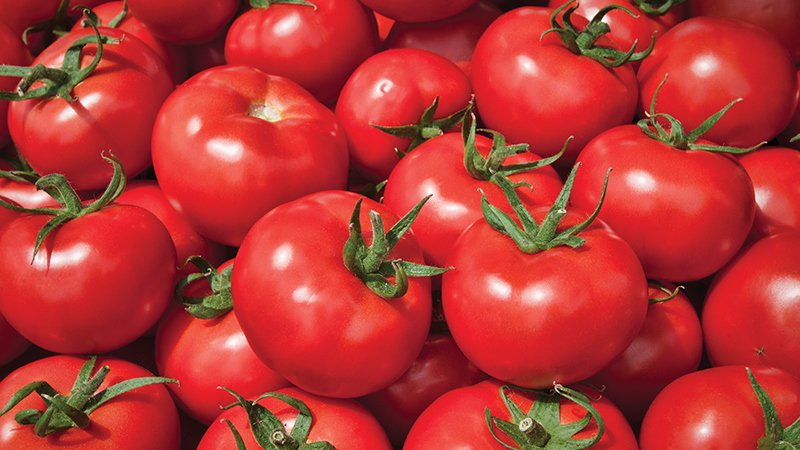‘Superfood’ Crop Still Looking for Its Place in the Sunshine State

UF/IFAS researcher Dr. Zhanao Deng tracks pomegranate progress at the Gulf Coast Research and Education Center in Balm, FL.
Photo courtesy of UF/IFAS
Did you know ‘Wonderful’ pomegranate, the variety most widely grown in the U.S., originated in Florida about 125 years ago? Despite this fact, the unique “superfood” has never found its footing as a commercial crop in the Sunshine State.
Zhanao Deng, a University of Florida Environmental Horticulture Professor, is trying to change that. Many Florida farmers are banking on Deng to find success in his quest to grow and breed pomegranates that will go to market earlier than the fruit from other states.
It’s not necessarily a huge transition from growing citrus to producing pomegranates, Deng says. Farmers can use the same orchards, equipment, and facilities they use for citrus.
“We can produce fresh pomegranate fruit, arils, and juice in July, which is at least two months earlier than growers in other states,” he adds.
Locally-grown pomegranates are scarce right now in the Sunshine State. The fruit grows on only about 100 acres statewide. Since 2014, Deng has been trying to grow and breed pomegranates at the UF/IFAS Gulf Coast Research and Education Center in Hillsborough County.
Mostly, Deng is studying how to make sure pomegranates can resist or avoid pests and diseases and not drop fruit on the ground. Those research victories would mean more yield for Florida growers. Eventually, he’d like to make the fruit even tastier.
The pomegranate tree is native to a region from modern-day Iran to northern India. In the U.S., about 90% of pomegranates grow in California. Florida’s wet season and its hot weather pose challenges to growing pomegranates.
“In Florida, pomegranates can grow well but tend to have a lot of fruit rot from a number of fungal pathogens,” Deng says. “This results in low yield and poor fruit quality.”
To avoid severe fruit rot, Deng and his doctoral student, Alexander Schaller, defoliated the pomegranate plants at GCREC in December 2020, hoping to harvest ripe fruit soon after the rainy season begins in Florida, usually in June. To their surprise, this treatment not only has advanced the harvesting season to July but has made the plants produce a lot of more fruit.
Pomegranates can grow well in Central and North Florida, Deng says. They may grow well in South Florida, but this needs to be tested.
“We will further refine our horticultural practices, and we’ll test different varieties, hoping to advance the pomegranate harvesting season to mid to late June,” Deng says. “We are developing a new generation of pomegranate varieties that are better adapted to Florida’s climate, have better resistance to fruit rot and other diseases, and can produce high quality of fruit so that Florida growers can grow pomegranates as an alternative fruit crop profitably.”
Deng’s pomegranate project has benefited with help from USDA Specialty Crop Block Grant Program, the Florida Department of Agriculture and Consumer Services, and the California Department of Food and Agriculture for funding the pomegranate trials and breeding. The Florida Pomegranate Association also has supported this project by donating plants and funding.









